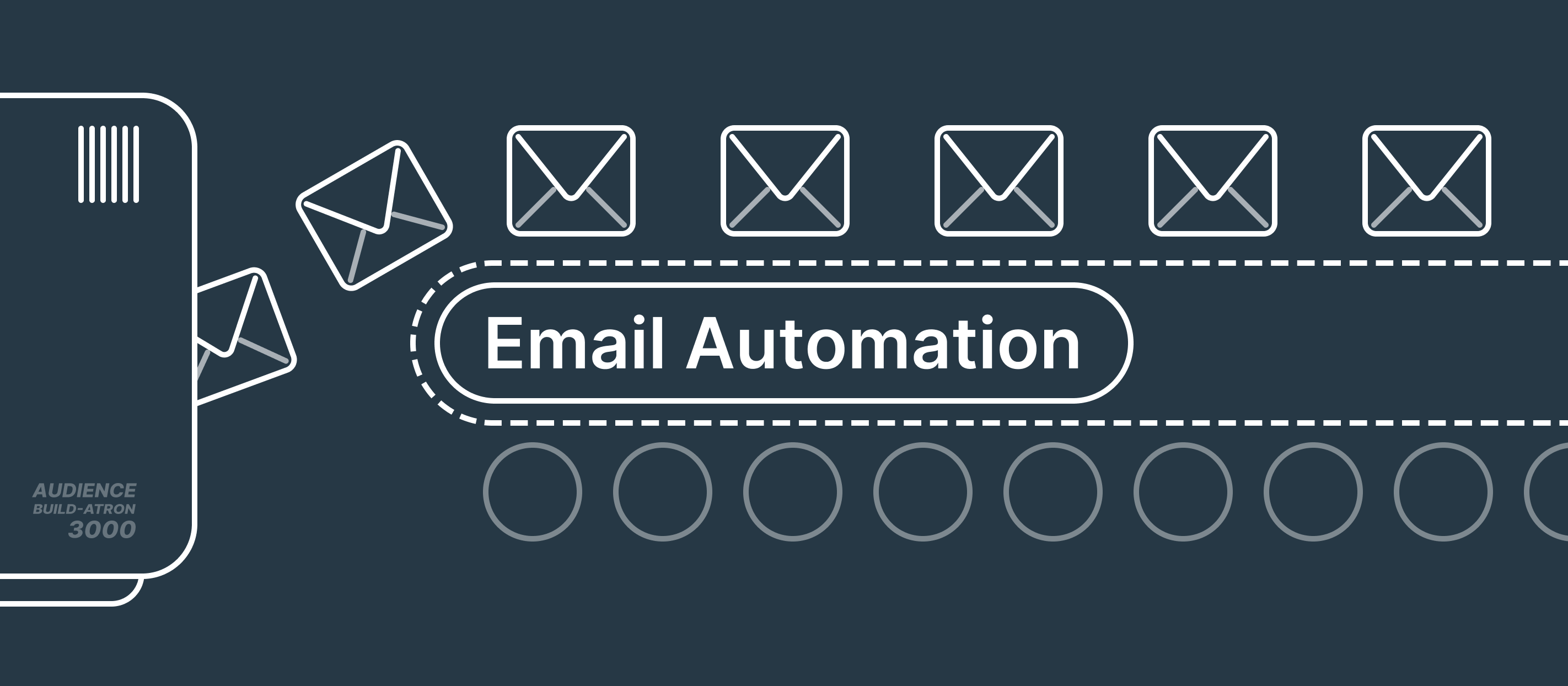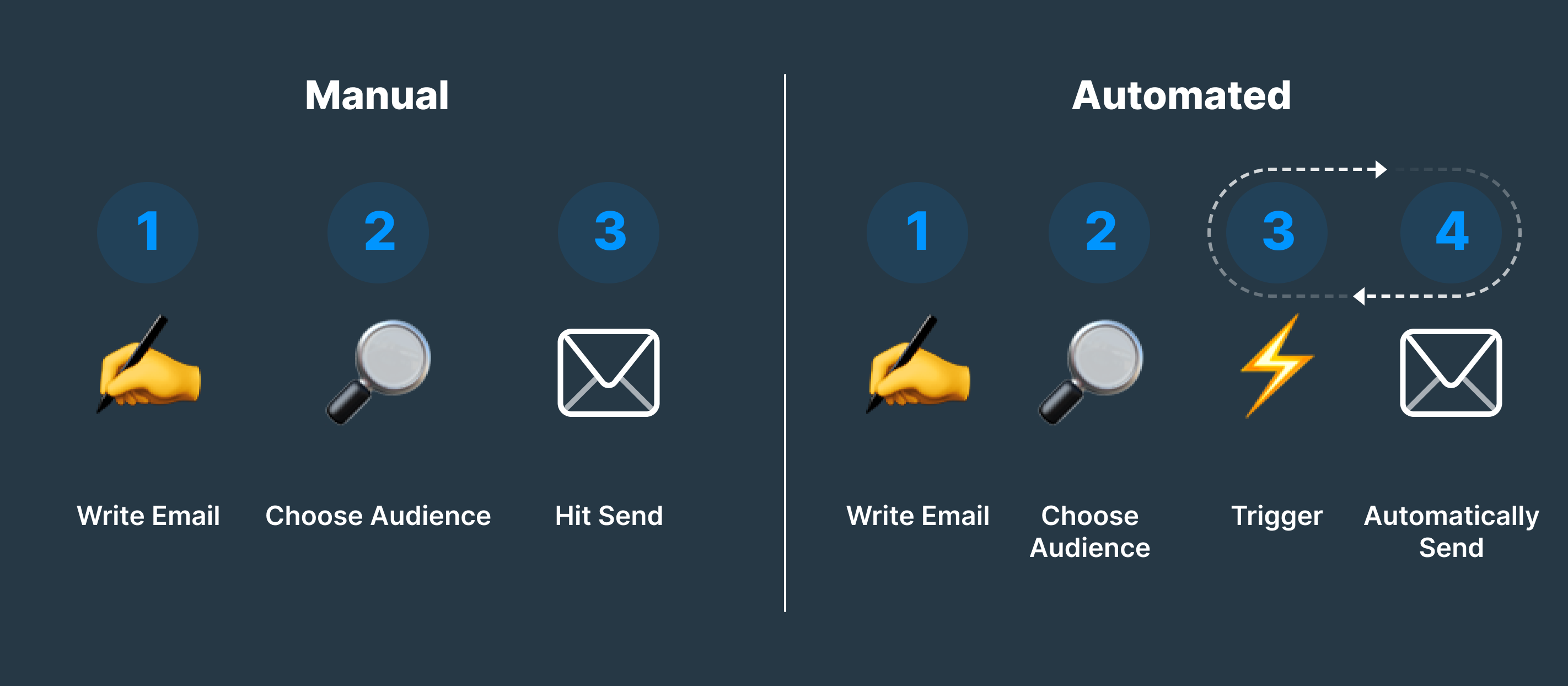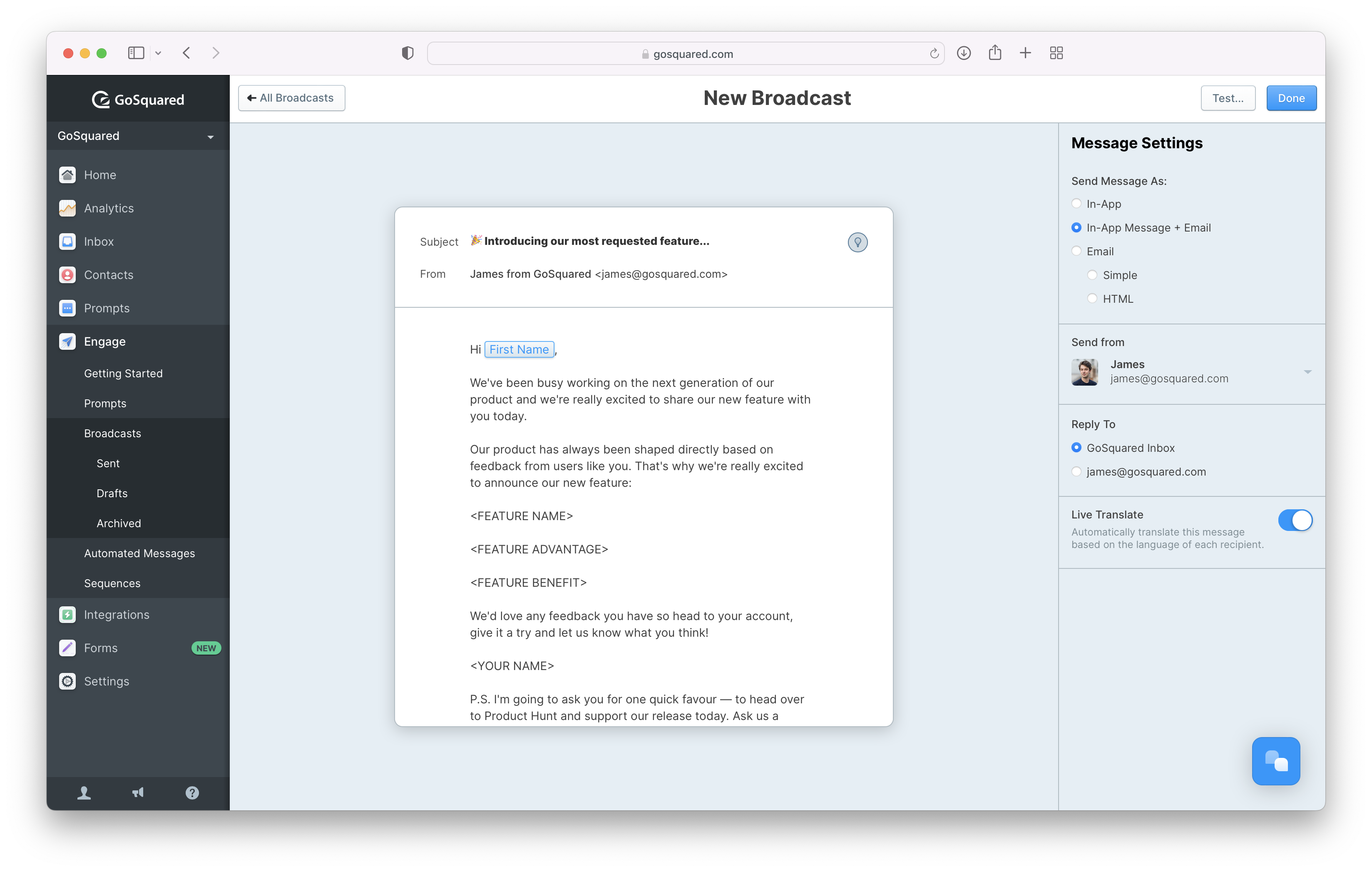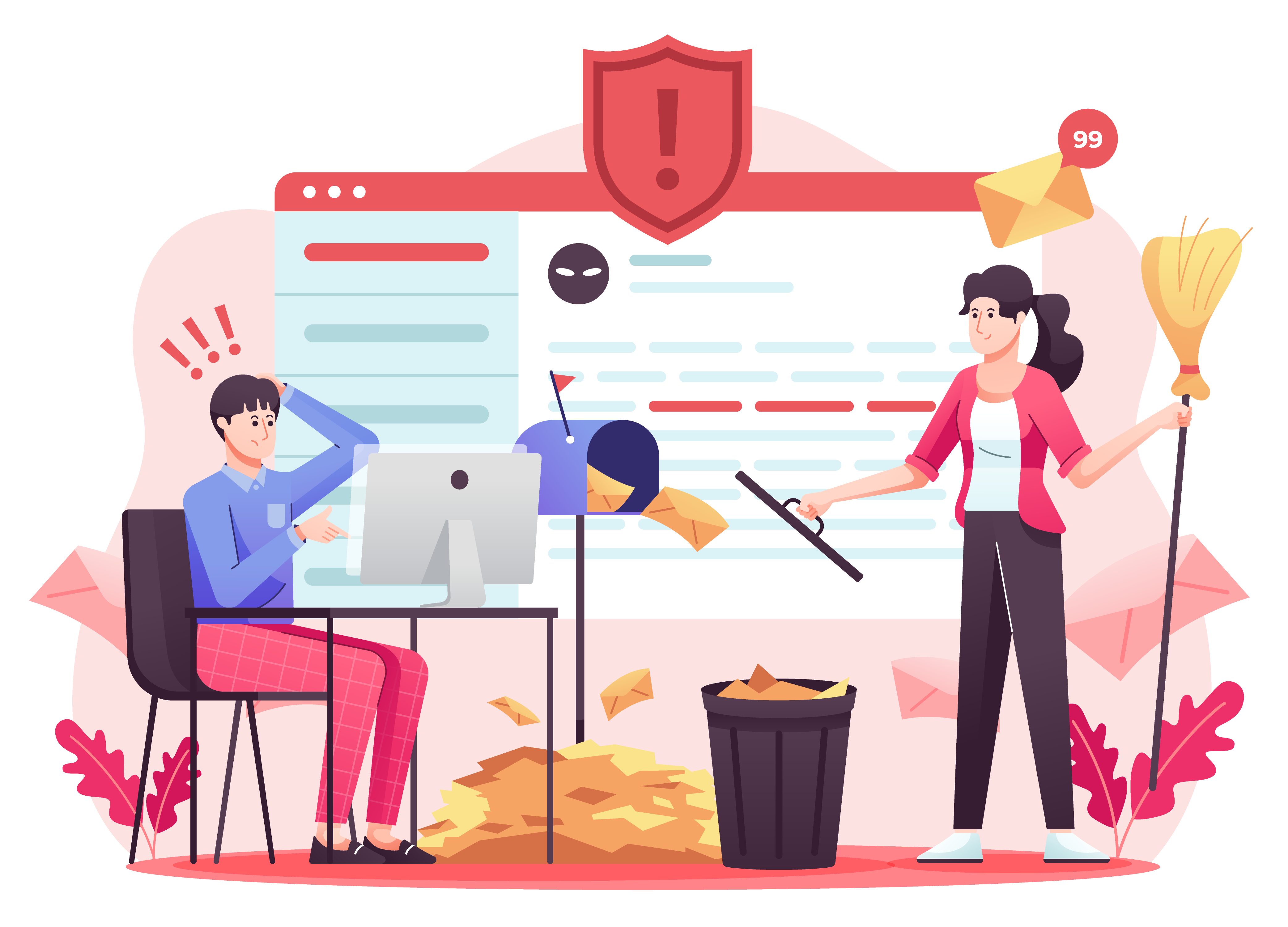
When you send an email to your customers, your goal is to keep them engaged, informed, entertained and ultimately, keep them onboard as loyal users. Like everything in the digital age, we are constantly finding innovative ways to do things better and smarter, and email automation is no exception.
Automated emails keep the communication flowing between you and your customers, sending just the right message at the right time. Versus manual techniques, email automation can help to streamline your messaging, and help you to better understand your users wants and needs.
For those new to email automation, contained in this guide is everything you need to know to get started. Success will allow you to maximise your email marketing ROI.
Contents
- What is email automation?
- Benefits of email automation
- Challenges of making email automation work
- How to get started
- How to take your email automation to the next level
What is email automation?

As the name suggests, email automation is the process of automating the emails that you send to your customers. The question is, why would you want to do that, and what are the benefits of doing so?
Everyone knows how to send an email from a service like Gmail to their friends or colleagues. But as a business, freestyling your emails doesn’t allow you to truly connect with your audience. Instead, email automation can be used to deliver data-driven emails that are more likely to be opened and positively engaged with.
In fact, you’ve almost certainly experienced your fair share of email automation as a recipient.
For example, when you sign up to a service like Netflix you’re greeted with a “welcome email” in your inbox. What happens when you haven’t signed in to watch Selling Sunset Downton Abbey for a week? You’ll likely receive an automated email reminding you to finish the series.
These emails not only feel personalised, they also happen to be pretty effective in achieving their aim.
It’ll be no surprise to hear that these emails are not being sent from someone’s Gmail every time. They are, however, orchestrated by mere mortals.
Email automation is a term frequently used within marketing, sales, and customer success teams when they want to send emails automatically to more than one person.
Plus, when the messaging needs to feel segmented, i.e. the email speaks to the user directly, based on a specific action they have just completed, or a particular demographic they fit into.
Learn more: Audience segmentation – the beginner’s guide.
Great power, and great responsibility
Email automation is at the intersection of human-computer interaction and benefits from having tremendous global-scale leverage. One person can email millions of people without even being at their computer.
With great power comes great responsibility, though. With such leverage, anyone responsible for automating emails will often start asking questions such as:
- How do you ensure your automated helps are beneficial to your business and your recipients?
- How do you find the right balance of sending emails at the ideal time when they have a good chance of being opened?
- What can you do to avoid your emails being marked as spam?
- How do you know if you’re sending too many or too few automated emails?
- How can you personalise your automated emails without being bland or creepy?
Benefits of email automation

There may be a lot to think about when working on email automation, but billions of automated emails are sent every day for some very good reasons.
We’ve outlined a few key benefits that might be helpful if you need to justify investing in email automation.
Keep your brand fresh in the minds of your audience
Keeping front of mind with your customers doesn’t necessarily mean you have to have a newsletter. Smart use of automation can enable you to set up emails that automatically send out based on the behaviour and activity of your customers.
For ecommerce businesses this might mean sending out a promotion automatically after a purchase to encourage repeat business.
For a subscription business this might mean surfacing new value to existing customers who have not been active for a period of time.
There is endless potential for email automation to enable your business or brand to grow. Without lifting a finger, your brand can remain relevant and drive repeat business with customers that might otherwise drift away.
Enjoying this post so far? Sign up for our FREE newsletter, and we’ll send you helpful content like this every week!
Give each customer a personalised journey
It may be possible to give one, or two, or maybe even ten customers a personalised experience when buying from your business.
But as soon as you get into the hundreds or thousands, you quickly find that something has to give.
You either:
- Spend every waking hour thinking about each and every customer journey, or…
- You start to give your customers a worse experience and a bland, one-size-fits all journey.
Email automation enables you to personalise the journey for every customer. So you can spend your time more effectively, and still give your customers a tailored experience.
Boost customer engagement and increase retention
For any subscription business, retention can be a killer.
By automating your messaging with customers you can dramatically increase the likelihood they’ll stay as customers.
By using customer segmentation, real-time behaviour data, and a healthy dose of creativity, you can message customers that may be drifting away and hook them back into your service to reduce the chance they will churn.
Learn more: The ultimate guide to customer engagement.
Free up time for your team
For most businesses, your team is the most valuable and expensive asset you have. Protecting their time and focusing them on high value work is likely at the top of any leader’s priorities.
Email automation enables a small team to have dramatically more leverage. Rather than crafting emails on a daily basis and having email automation on the mind continuously, it’s possible to batch up email messaging creation, segmentation, and setup.
Batch these tasks together, set your email to run on autopilot. You’ll quickly free up your time to work on higher value projects without sacrificing the experience for your customers.
Send messages at the perfect time
A downside of sending emails manually is you often send email when it makes most sense for you — the sender.
But you want to send emails with high open rates, click through rates, and ultimately a high chance of goal completion. To do that you need to think about when the recipient will be most likely to open the email and achieve the goal you want them to complete.
By automating your emails you can send messages 24/7/365 whether you’re awake or asleep.
You can send emails based on when your customers make purchases. Trigger emails based on user activity to be far more relevant and personalised than any manual email.
Challenges of making email automation work

Automating email can have its challenges.
From what we’ve seen from working with thousands of businesses, those who succeed keep the following challenges in mind when crafting their customer engagement strategy.
Ensure your emails are beneficial to recipients
The best emails start with focusing on the goal. No one wants to receive a wishy-washy email from a business they barely know. It wastes everyone’s time.
To ensure you deliver value both to your recipients and your own business, think clearly about the goal of the email and what you want the recipient to learn or do upon receiving it.
Think: what’s in it for the recipient when they receive this email?
How to maintain a high open rate
Open rates are an increasingly difficult metric to accurately measure.
But one key point will always be true: no one will act on your email if they don’t first open it.
To encourage recipients to open your emails we have a few tips and tricks:
- Get creative with subject lines. Write subject lines that are relevant to the day of week, time of year, or situation in which the email is being sent.
- Use an emoji. If you’re feeling adventurous, use an emoji, but don’t emoji-bomb your subject lines.
- Personalise subject lines. Some marketing automation solutions offer the ability to personalise subject lines with variables (sometimes called merge tags).
- Ensure you have permission. Build trust. A great way to be ignored is to send messages to people who have never asked to be emailed. Start with the core basics — aside from being required by law in many regions, it’s best for everyone if you ask permission before setting up any email automation to your customers.
- Send at the optimum time for each recipient. We could talk at length about the best times to send emails. Email automation gives you the opportunity to not just think about the day of the week or time of day, but the context and actions of the recipient which will trigger an email to be sent.
- Translate messages for the language of the recipient. An incredibly powerful feature that’s rare to see in marketing automation software is the ability to translate an email to multiple languages based on the language of each recipient. This can be a game-changer for businesses that have a global customer base. Segmenting campaigns by language and region can be another effective approach if you have the resources to achieve it.
How to avoid being marked as spam
We’ve all received automated emails that have felt irrelevant or untrustworthy.
And almost certainly we’ve all marked at least a few emails as spam.
The worst scenario
For marketers and professionals involved in customer engagement, having your emails marked as spam is probably the worst possible outcome of sending an email.
Not only do you lose trust with any customer who marks your email as spam, but your reputation as a business and a sender will also degrade.
With a poor reputation, it is harder to reach the inboxes of all customers — both existing and future.
Customers marking your emails as spam is bad. Really bad!
So how do you avoid customers marking your emails as spam when you’re crafting your email automation plans?
Make it easy to unsubscribe
Don’t take unsubscribes personally.
Your customers may unsubscribe for a multitude of reasons. The more you can understand about those reasons the better you can make your automated emailing.
What do recipients do when they want to stop receiving your emails and can’t find the unsubscribe link? Often they’ll hit the “mark as spam” button.
So make it easy for recipients to unsubscribe.
Send fewer emails
Research shows that sending four emails a week is optimum for engagement.
When recipients are bombarded with emails from a business they are more likely to hit the “mark as spam” button.
First impressions count. At the start of a relationship with a customer, it’s especially important to balance email volume and surfacing necessary information.
Think about the channel
You don’t have to send every message as an email.
Find a marketing automation solution that supports sending via other channels. Your customers don’t live in their email inbox.
Channels such as in-app messages and SMS can help you think about the customer journey holistically.
Segment your audience
Blasting out emails to everyone in your customer base will mean you miss opportunities.
Tailor your message to specific segments and avoid alienating and bombarding recipients.
Don’t do spammy things
Given you’re smart enough to be reading this guide, we hope it goes without saying: don’t be spammy!
It’s critical to build trust with your customers, and you can break that trust by using dirty tactics or short-term thinking.
Treat your recipients as fellow people. When in doubt, think about the recipient as if it were you.
What would make you hit the “spam” button?
How to avoid sending too many or too few emails
It can be easy to take the power of email automation and run wild with it.
It can be tempting to send emails at every opportunity based on every action your customers take.
Don’t set up an automated email to trigger every time users log in to your product. Bear in mind the well established magic figure of four.
Studies show that an individual’s likelihood to engage with a brand drops off significantly if they receive more than four emails in a week.
Four is a magic number
Four emails a week — maximum!
It’s not hard to believe — we’re all recipients of too many emails, so bear this in mind when crafting your own customer engagement strategy.
To reduce the number of emails sending out, go deep on the purpose of each email. Establish if there are ways to combine the message into another email.
You may also want to think about utilising other channels.
For instance, you don’t have to send every message as an email. Can it be an in-app or on-site message? Many messages will perform better if you send them when your customers are online and contextually aware of your service.
How to personalise your email automation at scale
Nothing beats a one-to-one manually written message for personalisation.
But you can personalise automated emails with far more than just “Hi, First Name!”.
With the right customer engagement software you can personalise sections of your automated emails. You can even use real-time data that’s highly relevant for each recipient.
Real-time variables
For example, you might want to add a variable into your subject line to grab someone’s attention.
A variable could be the recipient’s name, or something specific to your business or product.
A few examples:
- For a text editing or web publishing tool: “Elizabeth, don’t forget your 5 unpublished articles!”
- For a photo sharing application: “36 likes? Congratulations on your latest photo, Scott!”
Using real-time variables can elevate a subject line and the contents of an email from “bland and stale” to relevant, informative, and engaging.
The variables you can use will depend on your analytics and data setup, and how you choose to engage with your audience.
When used well can drive significantly higher open, click through, and goal completion rates.
Beware of the uncanny valley

At GoSquared we believe the best automated emails don’t try to imitate a human connection that doesn’t exist.
When you aim for your automated emails to mimic a one-to-one connection or get too personal, there’s a risk it can backfire.
The last thing you want is to reduce trust between your brand and your customers.
Want to steer around the uncanny valley of email personalisation?
- Keep your messages simple and short.
- Prioritise delivering value.
- Don’t try to trick anyone!
How to get started with email automation
Before writing an email, segmenting, or automating anything, start with the very first step:
What are you trying to achieve?
Even the smartest marketers sometimes skip this critical step!
But if you start with a clear goal then it’ll help save so much confusion down the line. Start with a goal and it’ll make crafting your automated emails so much smoother.
A few common goals and suggestions for how you could use email automation to help:
Drive new users to activate
Are you running a software business with online users? Do you rely on subscription revenue?
It is likely critical to encourage your new users to activate a key feature.
While a new user is online in their first visit to your web app you may want to hold back from sending an email. Sending an email too early may pull the user outside of your product and distract them.
Instead, this is a great use case for in-app messaging. Guide the user to specific actions in a specific order, and hand-hold them virtually through the process.
Timing is everything on day one
Where does email automation fit in, then?
If the user goes offline and fails to activate the key feature you want them to, then it’s a great opportunity to trigger an automated email.
Use email to drive the user back into the product. Perhaps you could remind them how close they are to achieving their desired goal with your product.
As an aside, we’ve written a lot about user onboarding before, so check out our guide. Watch this talk if you’re keen to build up knowledge on user onboarding further.
Re-engage customers to retain them
An incredibly powerful use for email automation is in bringing disengaged customers back to a subscription service.
Churn is a huge killer for subscription businesses and there is never one single cure to make churn go away.
Email automation can help to empower customer success and marketing teams. You can engage with existing customers that may be drifting away and losing interest in your product before it’s too late.
Segment your least engaged customers
Segment your customers based on those who were previously engaged.
Then segment further to find those customers who have not engaged for a period of time (this time frame will differ by business and industry).
You can quickly build a group of disengaged customers that likely need some attention.
For each business, the message you send to your disengaged customers will be different — for some it might be offering a targeted discount to encourage a repeat purchase, while for others it could be about surfacing a new feature or new content that may ignite interest and desire to return and re-engage.
To give your message a high chance of being read and actioned, keep it clear and focused.
Thank new customers for purchasing
When customers make a purchase or complete a significant action on your website, it can be a great opportunity to show gratitude and to make the customer feel positive about their purchasing decision.
You may also take the opportunity to surface the benefits of what they have just purchased, or even suggest some perfect accompanying products or services they could consider for the future.
A good time to send this email: trigger the message once a customer has made their first purchase. Depending on your data and analytics, this could be when their “lifetime value” increases from $0 or when their “total purchases” increases from 0.
How to take your email automation to the next level and be more effective

We hope you’ve found this introductory article on email automation helpful!
If you’re excited to start sending automated emails or thinking about wider plans to engage with your customers more effectively, then we might have something helpful for you: Our FREE customer engagement course!
It’s free and you’ll get five lessons delivered over five emails packed with easy-to-digest, practical advice. Plus examples from industry experts on how to engage with your customers effectively at scale.
Ready to get started engaging your customers for real? GoSquared’s Engage has everything you need to grow your business through engaging, onboarding and retaining your users.

